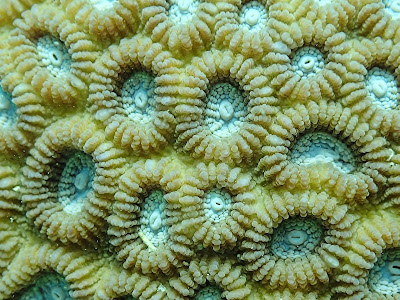Crown-of-thorns removal mission!

A Crown-of-Thorns starfish (Acanthaster planci) The crown-of-thorns ( Acanthaster planci ), is a large, thorned starfish which lives along the shallow reefs of the tropical band of the globe. It has all the fundamental components of any other starfish - a central disk, perimeter by radiating arms - but unlike most, this starfish can have up to 23, regenerative arms (all of which can be replaced in the case of lost limbs) covered with long poisonous spines. Usually found ranging between 25 cm – 35 cm in its adult stage, some individuals can be as large as 80 cm. The crown-of-thorns is a carnivorous predator, feeding on live coral tissue by everting its stomach over their surfaces. As well as hard corals, they can also feed on soft corals, sponges and encrusting organisms. Their presence on a reef give slower growing coral communities (e.g. Favites ) an opportunity to flourish by preferring feeding on branching and plate fast growing corals (e.g. Acropora ) However, the large size o








